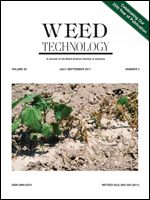Crop diversity may improve tolerance to weed interference and reduce the need for herbicides. This experiment measured weed interference in corn as affected by the preceding crop in two studies. The first study, based on interference of the resident weed community, compared dry pea, soybean, canola, and spring wheat for effect on corn tolerance to weeds. Prominent weeds were green and yellow foxtail. The second study examined corn tolerance to a uniform infestation of foxtail millet as affected by dry pea, soybean, spring wheat, and corn as preceding crops. Each plot was split into weed-free and weed-infested subplots in both studies. Corn was most tolerant to weed interference following dry pea; compared with soybean, dry pea improved corn tolerance more than twofold. Corn also yielded the highest in weed-free conditions following dry pea; compared across 4 yr, corn yielded 7 to 23% more following dry pea than following either soybean or spring wheat. Crop diversity has helped producers reduce herbicide inputs in the Great Plains and may provide an additional benefit of reducing weed impact on crop yield.
Nomenclature: Green foxtail, Setaria viridis (L.) Beauv.; yellow foxtail, Setaria pumila (Poir.) Roemer & J.A. Schultes; canola, Brassica napus L.; corn, Zea mays L.; dry pea, Pisum sativum L.; foxtail millet, Setaria italica (L.) Beauv.; soybean, Glycine max (L.) Merr.; spring wheat, Triticum aestivum L.





